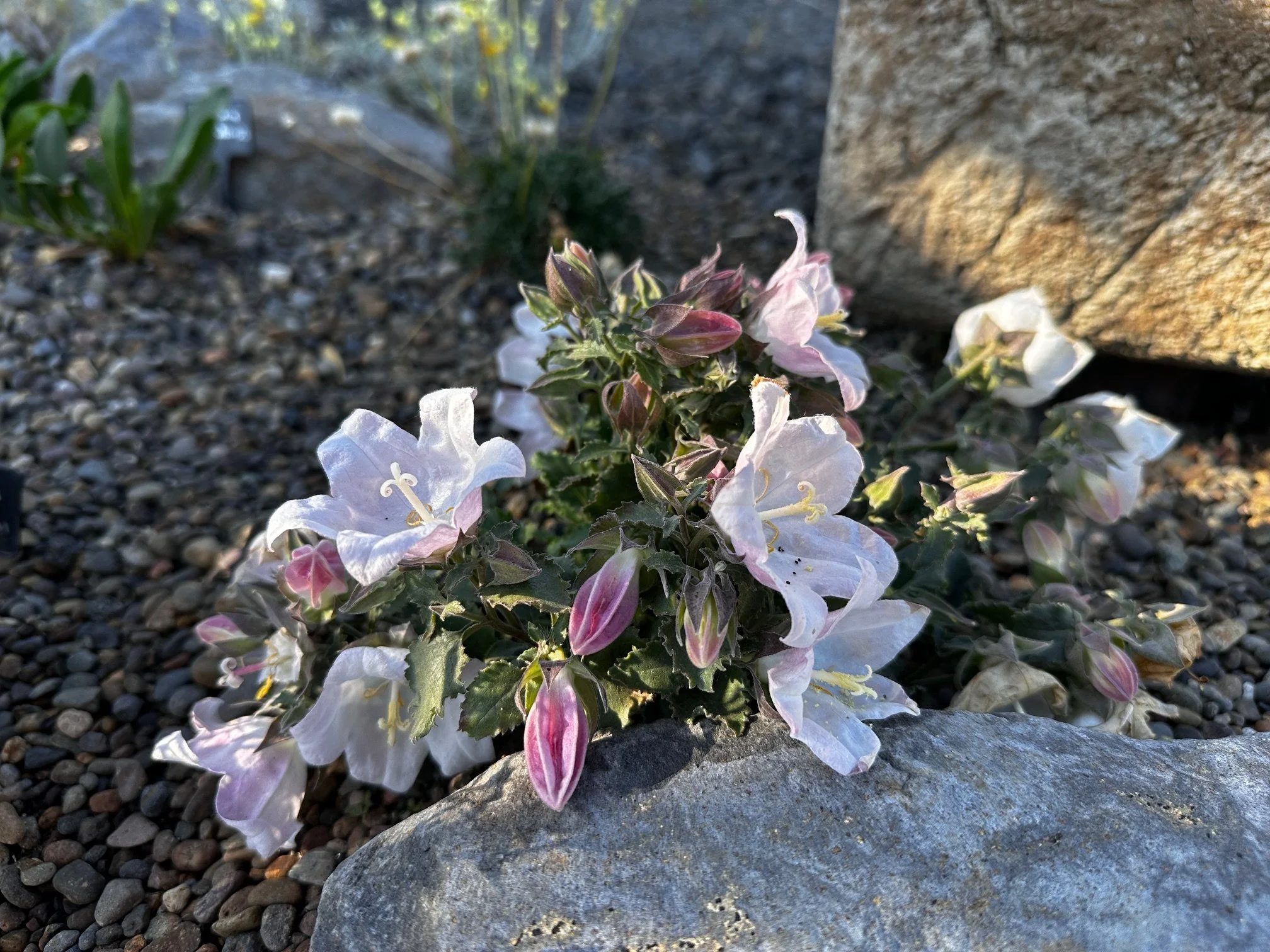
Spirea morrisonicola
Endemic to the high mountains of Taiwan, Spiraea morrisonicola is an alpine shrub of great charm and rarity. It inhabits windswept ridgelines, rocky slopes, and subalpine thickets on Taiwan’s tallest peaks—most famously Mount Morrison (Yushan)—where cool summers, mist, and thin, well-drained soils define its habitat. There, it forms compact, low-growing mounds that defy the elements while covering itself in masses of bloom.
In cultivation, this species delights with domed clusters of soft pink to blush-white flowers that appear in mid to late summer, held above fresh green foliage. The blooms are highly attractive to bees and butterflies, making it both an ornamental and ecologically valuable choice for specialized gardens. Its tidy, rounded habit and relatively small scale for a spirea make it especially well-suited for rock gardens, alpine beds, and even larger troughs where shrubs of this stature can be shown to advantage. I would say it does not love summer drought but it tolerates it quite well as I have it in one of the hottest driest locations at illahe and it is surviving, after reading more about the preferred habitat I will probably try it in a slightly cooler situation next.
Hardy to at least USDA zone 5, Spiraea morrisonicola requires well-drained, gritty soil and full sun to light shade. Once established, it is resilient and long-lived, tolerating cold and wind but needing protection from excessive winter wet.
Still very rare in cultivation outside its native Taiwan, Spiraea morrisonicola offers the alpine gardener a chance to grow one of Taiwan’s most exquisite mountain plants—a compact flowering shrub that brings structure, pollinator activity, and late-season color to the rock garden.
Endemic to the high mountains of Taiwan, Spiraea morrisonicola is an alpine shrub of great charm and rarity. It inhabits windswept ridgelines, rocky slopes, and subalpine thickets on Taiwan’s tallest peaks—most famously Mount Morrison (Yushan)—where cool summers, mist, and thin, well-drained soils define its habitat. There, it forms compact, low-growing mounds that defy the elements while covering itself in masses of bloom.
In cultivation, this species delights with domed clusters of soft pink to blush-white flowers that appear in mid to late summer, held above fresh green foliage. The blooms are highly attractive to bees and butterflies, making it both an ornamental and ecologically valuable choice for specialized gardens. Its tidy, rounded habit and relatively small scale for a spirea make it especially well-suited for rock gardens, alpine beds, and even larger troughs where shrubs of this stature can be shown to advantage. I would say it does not love summer drought but it tolerates it quite well as I have it in one of the hottest driest locations at illahe and it is surviving, after reading more about the preferred habitat I will probably try it in a slightly cooler situation next.
Hardy to at least USDA zone 5, Spiraea morrisonicola requires well-drained, gritty soil and full sun to light shade. Once established, it is resilient and long-lived, tolerating cold and wind but needing protection from excessive winter wet.
Still very rare in cultivation outside its native Taiwan, Spiraea morrisonicola offers the alpine gardener a chance to grow one of Taiwan’s most exquisite mountain plants—a compact flowering shrub that brings structure, pollinator activity, and late-season color to the rock garden.








